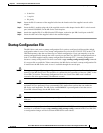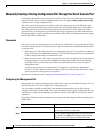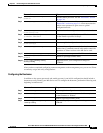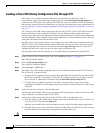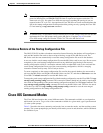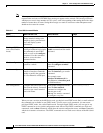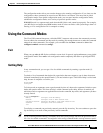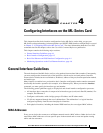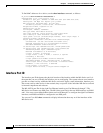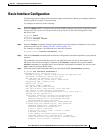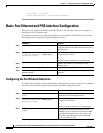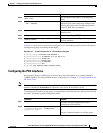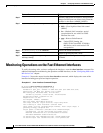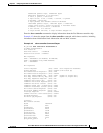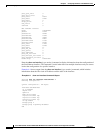
CHAPTER
4-1
Cisco ONS 15310-CL and Cisco ONS 15310-MA Ethernet Card Software Feature and Configuration Guide R8.5
78-18133-01
4
Configuring Interfaces on the ML-Series Card
This chapter describes basic interface configuration for the ML-Series card to help you get your
ML-Series card up and running. Advanced packet-over-SONET (POS) interface configuration is covered
in Chapter 5, “Configuring POS on the ML-Series Card.” For more information about the Cisco IOS
commands used in this chapter, refer to the Cisco IOS Command Reference publication.
This chapter contains the following major sections:
• General Interface Guidelines, page 4-1
• Basic Interface Configuration, page 4-3
• Basic Fast Ethernet and POS Interface Configuration, page 4-4
• Monitoring Operations on the Fast Ethernet Interfaces, page 4-6
General Interface Guidelines
The main function of the ML-Series card is to relay packets from one data link to another. Consequently,
you must configure the characteristics of the interfaces, which receive and send packets. Interface
characteristics include, but are not limited to, IP address, address of the port, data encapsulation method,
and media type.
Many features are enabled on a per-interface basis. Interface configuration mode contains commands
that modify the interface operation (for example, of an Ethernet port). When you enter the interface
command, you must specify the interface type and number.
The following general guidelines apply to all physical and virtual interface configuration processes:
• All interfaces have a name that is composed of an interface type (word) and a Port ID (number). For
example, Fast Ethernet 2.
• Configure each interface with a bridge-group or IP address and IP subnet mask.
• VLANs are supported through the use of subinterfaces. The subinterface is a logical interface
configured separately from the associated physical interface.
• Each physical interface, including the internal POS interfaces, has an assigned MAC address.
MAC Addresses
Every port or device that connects to an Ethernet network needs a MAC address. Other devices in the
network use MAC addresses to locate specific ports in the network and to create and update routing
tables and data structures.



